Macchi MC72
“World Speed Record”

S.B.S. Model, 1/72 scale
S u m m a r y : |
Catalogue Number, Description and Price: |
S.B.S. Model Item No. SBS7015 - Macchi MC72 “World Speed Record”
|
Scale: |
1/72 |
Contents & Media |
24 grey resin parts; one clear resin part; 16 photoetch parts; one clear acetate instrument film; one very well printed decal sheet for the World Speed Record aircraft together with a colour painting guide. |
Review Type: |
First Look. |
Advantages: |
Beautiful castings; not much chance of warpage; excellent decals and instructions; all in a solid box. |
Disadvantages: |
No interior colour information nor measurement guide for making the float and wing wires and rods. |
Conclusions: |
This is a scrumptious kit that will add to any collection of racing aeroplanes, Schneider Trophy contestants, between-the-war aircraft or aircraft significant in aeronautical history. Its not cheap but is excellent quality. |
Reviewed by Graham Carter

Eduard's 1/48 BRASSIN Bf 109 F Engine and Fuselage Guns
are available online from Squadron.com
For me one of the most iconic racing aircraft of the interwar years and one I have lovingly fondled in real life at the Museo Storico Aeromautica Militare (Italian Air Force Museum) at Vigna di Valle north of Rome - Oh, the joy!
SBS has produced two version of this aircraft differing in decals and minor fuselage modifications. This is the “World Speed Record” edition representing the aeroplane after it had set the speed record for piston engined float-planes in 1934 that still stands today, 86 years later! The outright world speed record it set stood for five years.
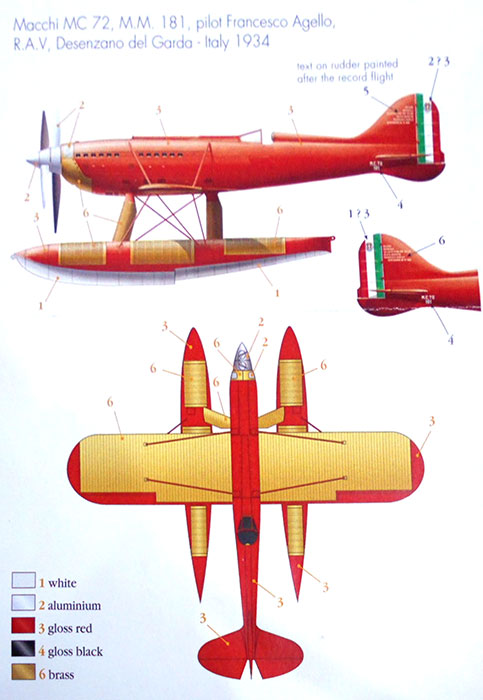
Built to contest the 1931 Schneider Trophy races off the south coast of England but engine issues prevented inclusion, the Macchi Castoldi MC72 had an enormous 24-cylinder coupled V-12 liquid-cooled piston engine built by FIAT and which developed a whopping 3100hp. To cool the beast most of the wings, floats, forward fuselage (and in the original one, rear fuselage as well) and float-struts were covered with radiators - much as Mitchell had employed in the successful S5, S6 and S6b racers. The massive engine passed its power through concentric shafts to contra-rotating propellers, a job made easier by the fact that the engines are mounted back-to-back.

The kit comes in the standard SBS strong top-opening box with a colour drawing on the top. Inside are four zip-lock bags, a loose decal sheet, an A5 colour scheme sheet and four sided A4 B&W sheets folded into an A5 instruction booklet. The kit is light years in advance of the only other 1/72 scale kit, by Delta2 in the 1970s which was a very crude representation.

I would recommend the Italian Book “Idrocorsa Macchi”, number 26 in the Speciale Ali d’Italia series, which does have English summaries and captions. This covers all of the Macchi float-plane racers in good depth with nice 1/72 drawings and colour schemes.
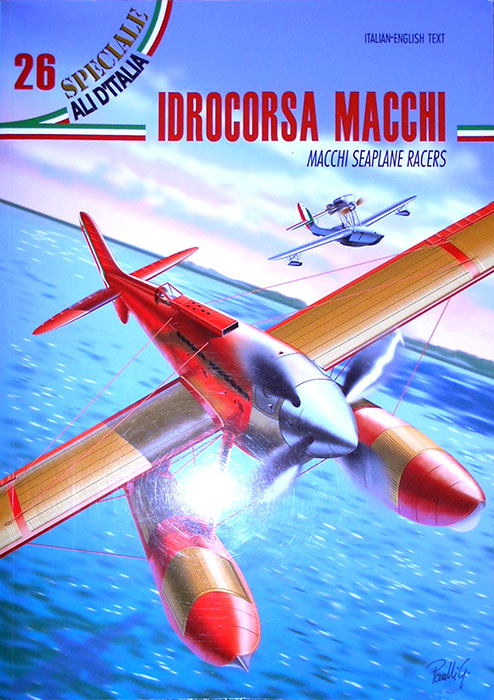
I would also strongly invite you to go to the Museo Storico Aeromautica Militare at Vigna di Valle when all this virus is over - the best aviation museum I have ever been to, with a great cafe and outside seating area overlooking Lake Bracciano to keep ‘she who must be obeyed’ entertained while you slobber over the museum’s contents!
The larger bag contains the floats, wings and fuselage halves, while the smaller one contains all the other components - struts, props, tail feathers and cockpit details. A tiny bag holds a clear resin canopy cover and another small one, the instrument panel clear film and a PE sheet for the instrument panel, seat belts, pedals, control levers and mooring rings for the floats.
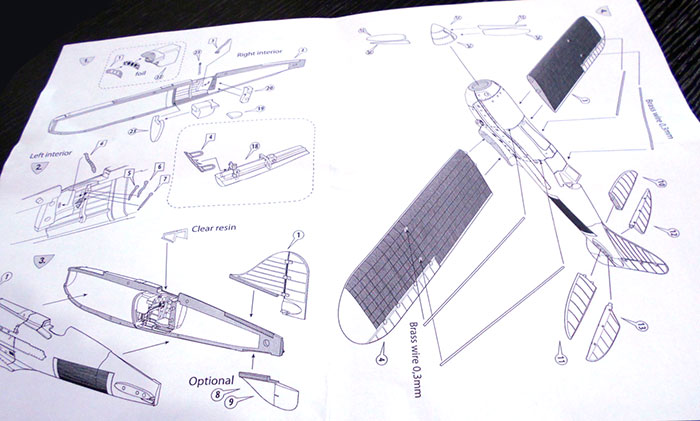
All parts are beautifully cast, no bubbles anywhere, and most of them have large casting blocks that protect against warping. Most parts have fine web attachments but care will be needed with the fuselage as the casting blocks impede onto the mating surfaces, as shown. There are locating pins and holes to help alignment, although I suspect some modellers will add wires or rods to strengthen the wing to fuselage joints.
Interior of the cockpit is well-represented with structures cast into the fuselage interiors and a separate floor, seat, instrument panel and bulkhead in resin and PE. No painting colours are given but I believe the interior was ivory with silver-grey details and seat. Wings and tail should attach neatly and the distinctive double propeller unit is made up of a spinner and four blades - make sure you watch the blade direction of rotation as this is a contra-rotating unit.
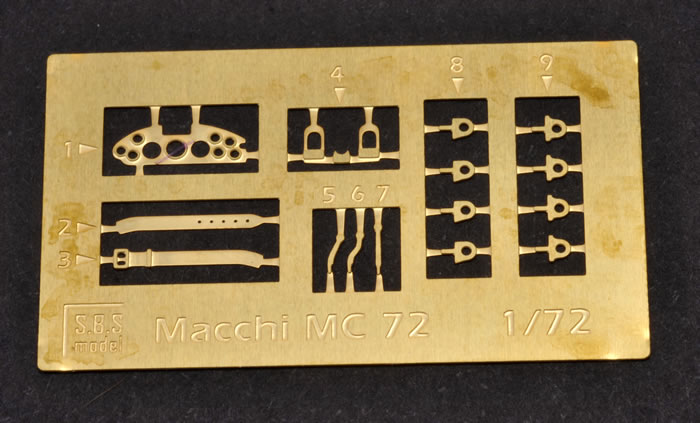
The modeller is required to produce all the flying wires and float connecting wires from 0.3mm diameter brass or steel wires/rods. There are twelve of these and no dimensions are given - a bit of a pity as accurate measurements will be a chore.
Markings and Instructions
Painting is a complex job as much of the flying surfaces is covered with brass radiators, delicately cast into the surface, so fine that painting will need a lot of care so that the detail will not be lost. The colour instructions are excellent but it would be a good idea to paint up the fuselage and wings separately from the floats and connecting wires before joining them all together, and then adding the wires.
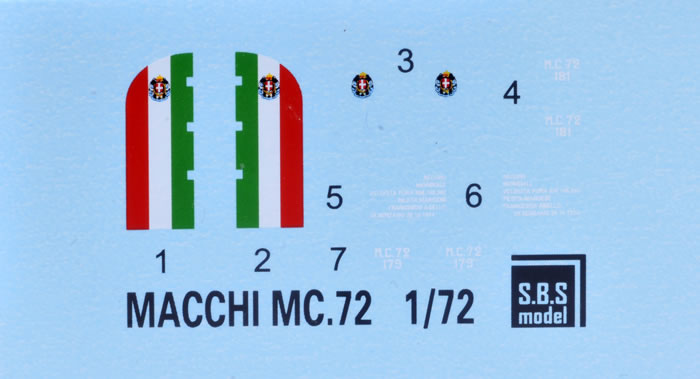
Decals provide all that is needed and look to be beautifully printed.
This is a scrumptious kit that will add to any collection of racing aeroplanes, Schneider Trophy contestants, between-the-war aircraft or aircraft significant in aeronautical history. Its not cheap but is excellent quality.
Purchased by the reviewer from SBS Model
Review Text and Images Copyright © 2020 by Graham Carter
Page Created 14 January, 2020
Last updated
27 October, 2020
Back to HyperScale Main Page
Back to Reviews Page

|
